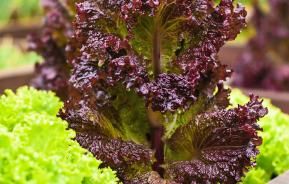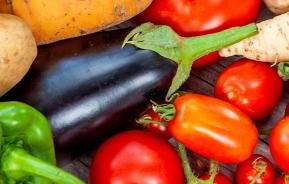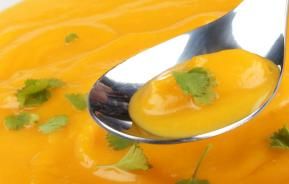Cauliflowers aren't difficult to grow - but it can be a bit of a challenge to produce large. quality heads. Having said that, they are still worth a go. Growing single portion cauliflowers is often an easier, better bet - and certainly more suitable for individuals and small families.
There are also varieties that produce heads of a different colour to the standard white. These look very attractive and ornamental, so could be grown in flower beds and borders or in containers on the patio.
By growing different varieties you can have cauliflowers ready to harvest and eat for much of the year.
How to grow cauliflowers
Cultivation
Cauliflowers prefer to be grown in an open, sunny position.
They need fertile, deep soil, that is preferably alkaline, with lots of added organic matter. If your soil is acidic, add garden lime before sowing or planting out.
Cauliflower varieties
- Summer Beauty, Flamenco, Nautilus
- Autumn Belot, Kestel
- Winter Aalsmeer, Galleon, Patriot
- Coloured curds Cheddar, Graffiti, Violet Queen
Sowing cauliflowers
The main sowing period is from March to May. You can sow earlier in mild regions under cloches, and later in June for late varieties. For a very early crop in late summer or early autumn, sow indoors in cell trays in a heated propagator or on a windowsill in late January/February.
For best results, sow seeds very thinly in a separate seedbed in a shallow drill about 13mm (½in) deep. Cover with soil and water in well.
How to care for cauliflowers
When the young plants have 5 or 6 leaves, carefully lift and transplant them to their final growing position. Improve the soil first with a general granular plant feed. Firm the soil around each plant afterwards and water in well. Space summer and autumn cropping cauliflowers 60cm (2ft) apart and winter cropping ones 75cm (30cm) apart. For small, individual portion cauliflowers, space plants 15-23cm (6-9in) apart.
Water plants well in dry weather and covers the soil with a mulch to conserve soil moisture. Occasional feeds with a liquid feed through summer will improve the crop. The curds of summer cropping varieties need protection from strong, burning sunlight - simply bend a few of the larger, upper leaves over them. Doing this in late autumn and winter will protect against frost damage.
Harvesting
Start to harvest by cutting through the main stem under the head when it is a good size and still firm. If you leave it too late the individual florets in the head will start to separate; this not only looks less attractive but it also reduces the flavour.
Pests
Cauliflowers may be susceptible to the following pests and diseases.
- Pigeons
- Clubroot








